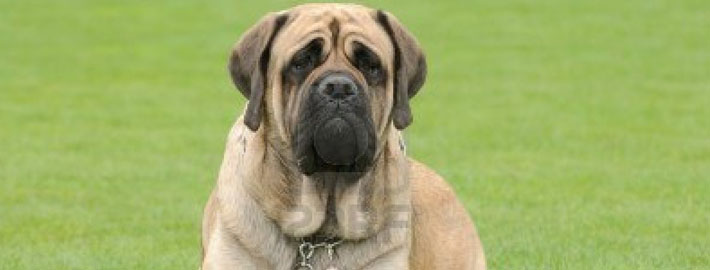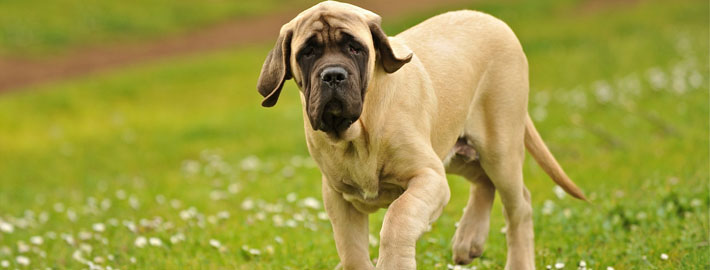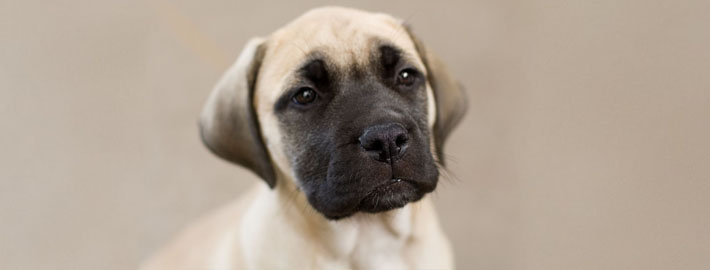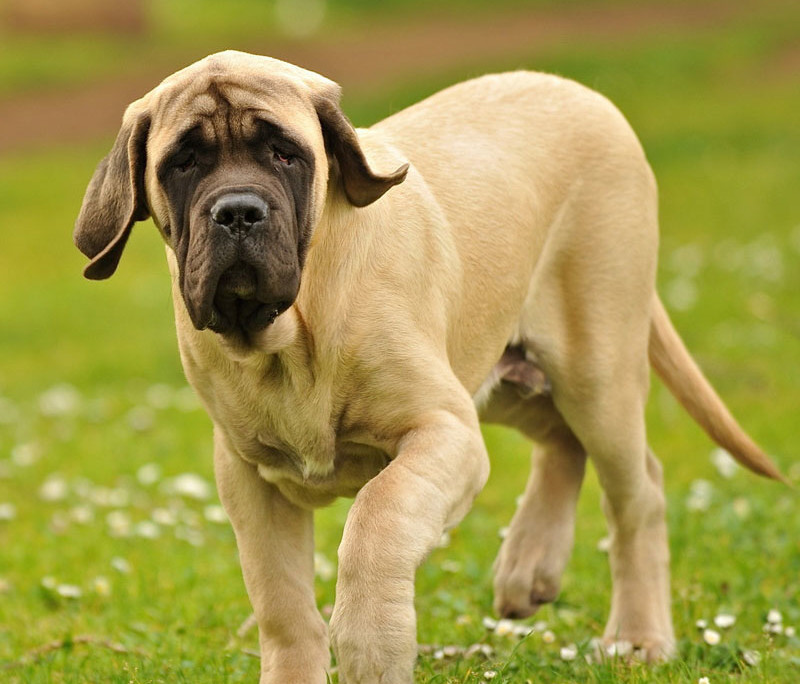What makes the English Mastiff Unique?
Given their incredibly loyal dispositions, it is no surprise that these large dogs have continued to maintain their place as beloved family companions and estate guardians throughout the centuries.
Breed Groups
Page Contents
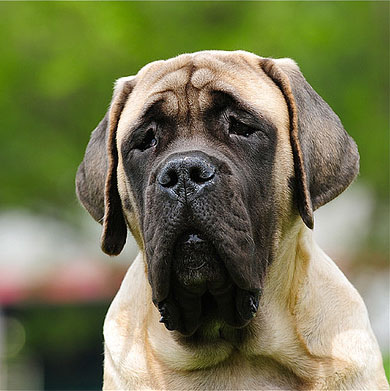
Is the English Mastiff Right For You?
These canines are devoted their human family members and they will follow them about in their role of protector. Even if they are not overly affectionate, these dogs are also quite good with youngsters as well as other pets. However, as is the case with any large breed, families that contain small children may want to exercise caution when bringing one of these dogs into their home as playtimes could easily result in unintentional injuries. These dogs also can be somewhat slobbery individuals and they are not recommended for families with an aversion to drool.
In 5 Words
- Gentle
- Calm
- Docile
- Even-Tempered
- Intelligent
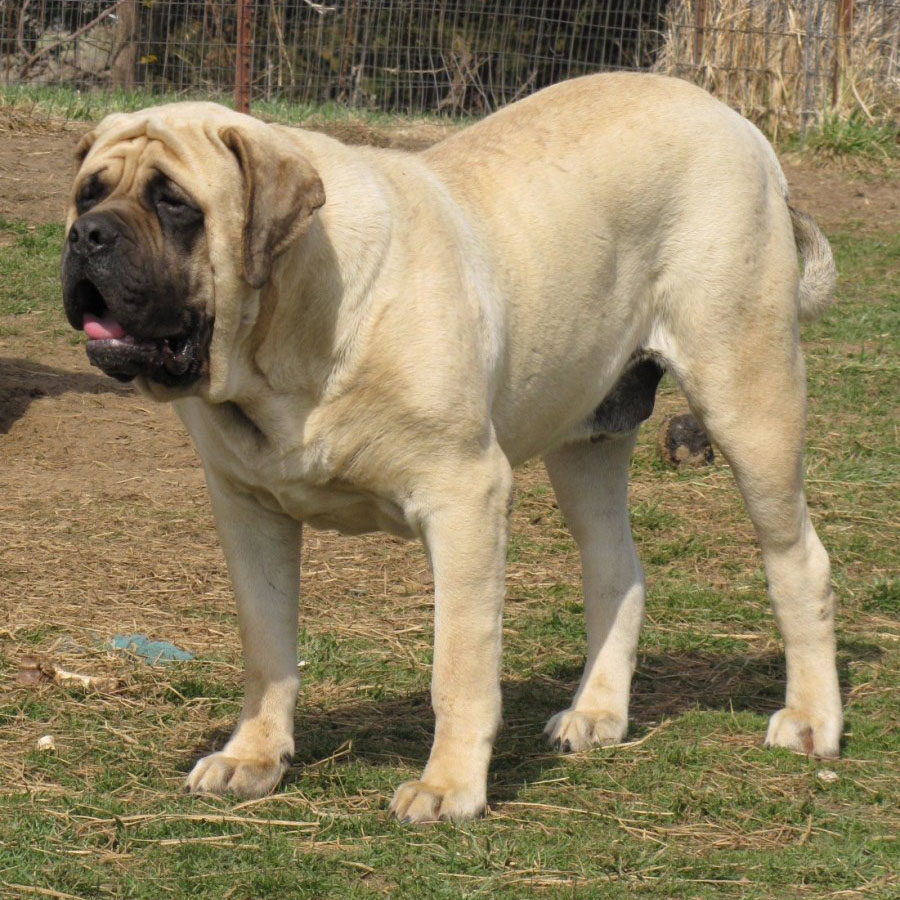
Characteristics
Learn About the English Mastiff
Description
General Description
Mastiffs have muscular bodies that feature a symmetrical shape and strong bones. They are also somewhat longer than they are tall. Their necks are moderately long and slightly arched. Broad chests with a deep cavity, short muzzles, and slightly sloped shoulders are other breed features. These dogs have wide-set, dark brown eyes that possess an alert expression. Members of this breed have small ears that are rounded and form a v shape at their edges. They also possess wide skulls, flat nostrils, and wrinkled foreheads. The large noses found on members of this breed should be dark in hue. Mastiffs have straight forelegs and broad back legs. These dogs display a powerful, well-balanced gait when in motion. According to American Kennel Club (AKC) standards, members of this breed should give the impression of “grandeur and dignity”.
Size
Mastiffs are very large dogs. The American Kennel Club states that male dogs should be “more massive throughout” but go on to state that females of this breed “should not be faulted for being somewhat smaller in all dimensions while maintaining a proportionally powerful structure” At the very least, breed standards call for female dogs to measure 27.5 inches (69 centimeters) in height and their male contemporaries should be 30 inches (75 centimeters) tall. Female dogs similarly weigh slightly less than the males do with them being 120 to 200 pounds (54 to 91 kilograms) and 150 to 250 pounds (68 to 113 kilograms) respectively.
Coat
These dogs have a double coat comprised of a thick undercoat and an outer layer that is relatively short in length and coarse in texture. Their fur should be straight rather than wavy or curly. Acceptable colorations for members of this breed include fawn, brindle, and apricot hues.
Short History of the English Mastiff
For over two thousand years, Mastiffs have served their English owners as watchdogs. However, their ancestors date back even further to canines that were used by the Romans to guard property at home and serve as allies in combat. Some of these dogs even fought in gladiatorial contests. The breed was even mentioned by Caesar in his account of the invasion of Britain, which occurred around 55 B.C. Mastiffs were used as war dogs as late as the beginning of the Renaissance era.
The more modern version of this breed was created when dog fighting was banned in 1835. This allowed the dogs to develop the placid temperament that they now have. In 1885, the breed was recognized by the American Kennel Club. Although these dogs were nearly wiped out during both the First and Second World Wars, they have endured to become a popular family pet for those that don’t mind their large stature.
Temperament
Despite their imposing physique, Mastiffs are typically placid, good-natured individuals that seem to believe they are lap dogs. These canines are devoted their human family members and they will follow them about in their role of protector. Even if they are not overly affectionate, these dogs are also quite good with youngsters as well as other pets. However, as is the case with any large breed, families that contain small children may want to exercise caution when bringing one of these dogs into their home as playtimes could easily result in unintentional injuries. These dogs also can be somewhat slobbery individuals and they are not recommended for families with an aversion to drool. Although Mastiffs are well behaved indoors and usually get along fine in apartments, these large dogs do need some space to stretch out and benefit from having access to a small yard.
Caring for Your English Mastiff
General Health
Mastiffs typically have a lifespan of 7 to 10 years and owners will need to keep an eye out for a number of conditions that can arise in these dogs. Bloat, dysplasia, cystine urolithiasis, disorders of the eye and eyelids, heart problems, vaginal hyperplasia and seizures are all health conditions that have been known to occur in members of this breed. Flatulence can also be problematic for some dogs.
Care
Daily
Although they have a generally lazy disposition, Mastiffs benefit from regular workouts. However, a leisurely stroll around the block is enough to meet their daily exercise.
Weekly
Mastiffs can be heavy shedders, but some individuals only go through twice yearly periods of fur loss whereas others leave hair everywhere on a regular basis. A once weekly brushing is recommended for members this breed but owners that feel the need to do so can certainly comb their dogs on a daily basis to keep fur from getting all over the place. It is also a good idea to regularly cleanse your dog’s teeth in order to prevent both foul breath and tooth decay.
Monthly
All pets require flea, heartworm, and tick prevention medications to keep them healthy. These products are usually administered on a monthly basis.
Grooming & Bathing
Owners will not only need to regularly wipe their dog’s face clean, they will also need to make sure it is properly dried because the wrinkled visage of a Mastiff can easily trap dirt and debris. The dog’s toenails will likewise need to be kept trimmed. Members of this breed only require a bath when they get dirty but bathing them once a week will similarly be fine as long as a mild shampoo is used during the procedure.
Exercise & Training
Due to their large size, Mastiffs require obedience training and their instruction should commence once the dogs reach 3 months old. Early socialization is likewise necessary as some members of this breed have a tendency to be shy. These dogs tend to push their limits with their owners and can be quite stubborn at times. Selective hearing can likewise be a problem for members of this breed. Therefore, these dogs require firm handling. However, properly trained Mastiffs do enjoy participating in various types of dog sports.

